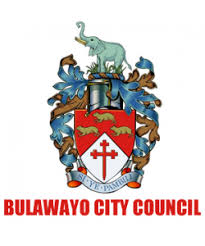Bulawayo is still plagued by water scarcity and the Bulawayo City Council (BCC) has come up with various strategies to suppress demand and reduce consumption.
Suppressing demand, the engineers said, would preserve the available water and enable residents to have access to water in the face of shortages caused by the climate change-induced drought.
Presenting on the importance of managing water demand, a defence against water scarcity during the Bulawayo Water and Sewerage Services Improvement Project Water and Service Delivery Indaba held at the Large City Hall Thursday, Engineer Sikhumbuzo Ncube confirmed the city was ‘still not out of the woods’ regarding water supply.
“The suppressed demand is 120 megalitres to 125 megalitres per day, we envisage an unsuppressed 150 megalitres to 155 megalitres per day. The future demand is not very far and demand may jump to 210 megalitres 10 years from now looking at the growth of the city,” he said.
Eng. Ncube said for instance the city would be forced to decommission Umzingwane Dam again if there were no “meaningful rains”.
Currently, he said Umzingwane dam levels were at 6.7 percent.
The engineer noted that 40 percent of Bulawayo’s water supply was lost due to non-revenue water losses.
“This is quite huge, as 60 percent is only finding its way to consumers. The major consumers are residents, followed by commerce, industry, then institutions and smaller cities such as Esigodini,” he said, noting that Bulawayo’s supply dams have only managed to reach levels of 70 percent.
“Statistics we have are from an analysis of figures from 2011 to 2021. We experienced drought in 2013, 2016, and recently in 2020. We always assume that whenever it rains, the dams are now full but the only time when our dams have spilled since 2011 is only in 2017.”
Eng Ncube added it was increasingly becoming difficult for the dams to be full.
“As much we receive rains, they are continuously not enough to realise full capacity in terms of storage of our dams,” he said while non-revenue water usage was another challenge.
Non-revenue water is water that is supplied but the city does not receive revenue from it.
“This refers to bursts, leaks, overflows in reservoirs -something you can see and the commercial side –meter readings. From 2012 to 2019, our non-revenue water has been steadily on the increase. Currently, it’s at 40 percent, but it’s slightly more as figures seem to have increased. The question is then how do we reduce non-revenue water as a city.”
Eng. Ncube said another cause was the steady growth of consumers in Bulawayo, as it had to be balanced with water supply.
“We see from 2018 to 2019, there was a jump in consumers in the city. Then a steady rise from 2019 to 2021. We don’t know the pattern going forward. Our strategies need to talk to this growth,” he said, emphasising that sources of water were depleting and their capacity was compromised.
“Our taps can run dry anytime, if we do experience a drought. If we don’t manage water demand, with the rate of growth, we use more water then have very few years or time to plan for another source and treatment plant. But if you practice water management, you delay capital investment in a new source or treatment and have more time to plan and less costs.”
However, the engineer praised Bulawayo residents for having ‘already conformed’ to a lifestyle of using water sparingly.
“Most people don’t use tubs for bathing, they use buckets, which is normal. If you go to other cities you might see different practices. Continue to maintain that lifestyle. Some interventions are to highlight we are still not out of the woods, still need to remember to use water sparingly and have stakeholders accepting and supporting that situation,” he said.
Chamber Secretary, Sikhangele Zhou, also requested that residents use other water sources for non-potable sources since the city was having challenges in providing many quantities of treated water.
“You don’t have to stop swimming, you can use or buy borehole water and then continue with your lifestyle. We need to manage potable water and the idea of keeping the city a place to live. Use other alternatives even when building because we want the city to grow,” she said.

